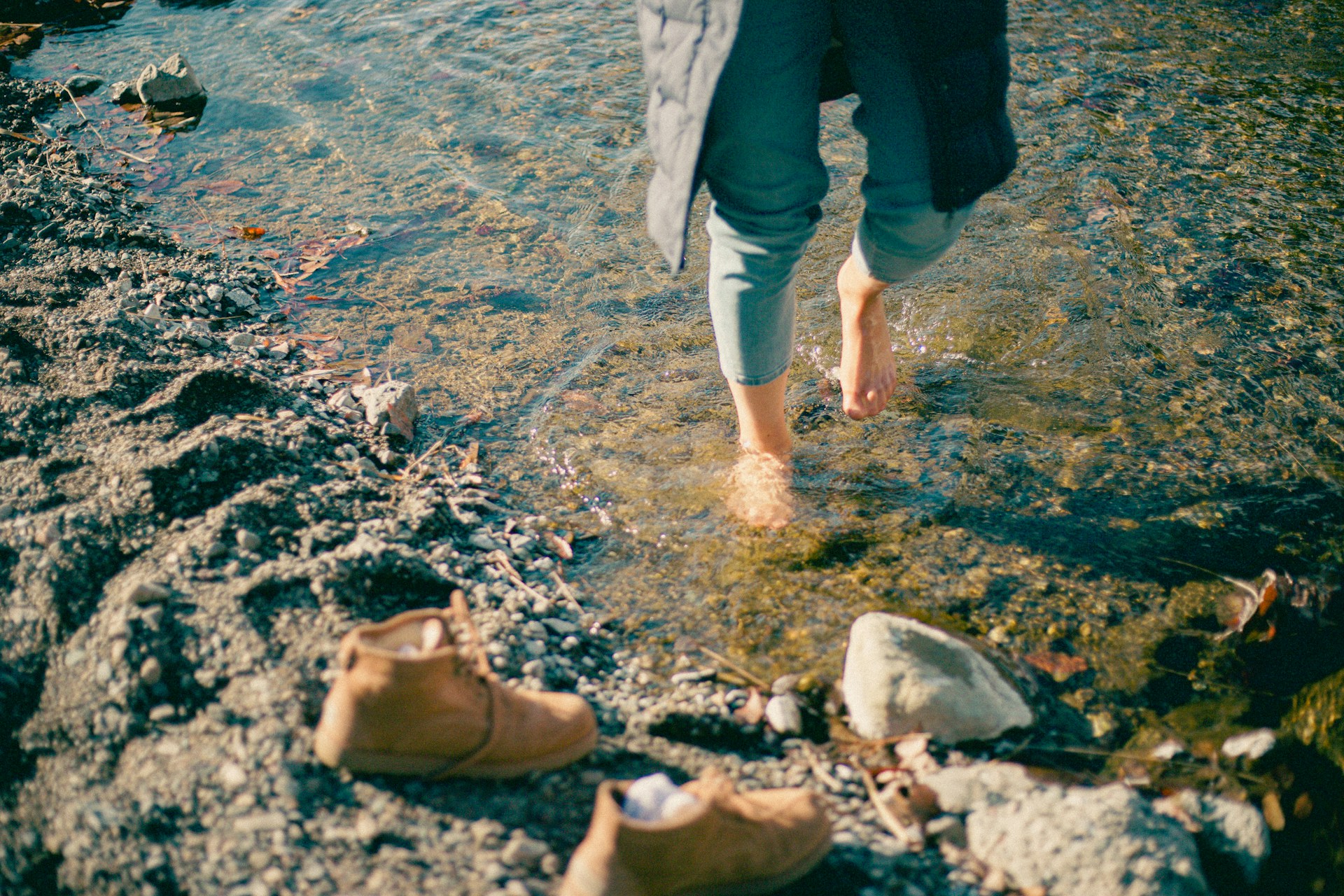
As lake homeowners, we’ve all gone swimming in the lake during the summer. But when you’re wading upright in the water, have you noticed that your feet are colder than your torso? This is because of lake stratification. Its significance is more than simply temperature changes — it also affects the freshwater environment around us. If you’re curious to learn more about this phenomenon, check out the interesting science behind lake stratification.
What is Lake Stratification?
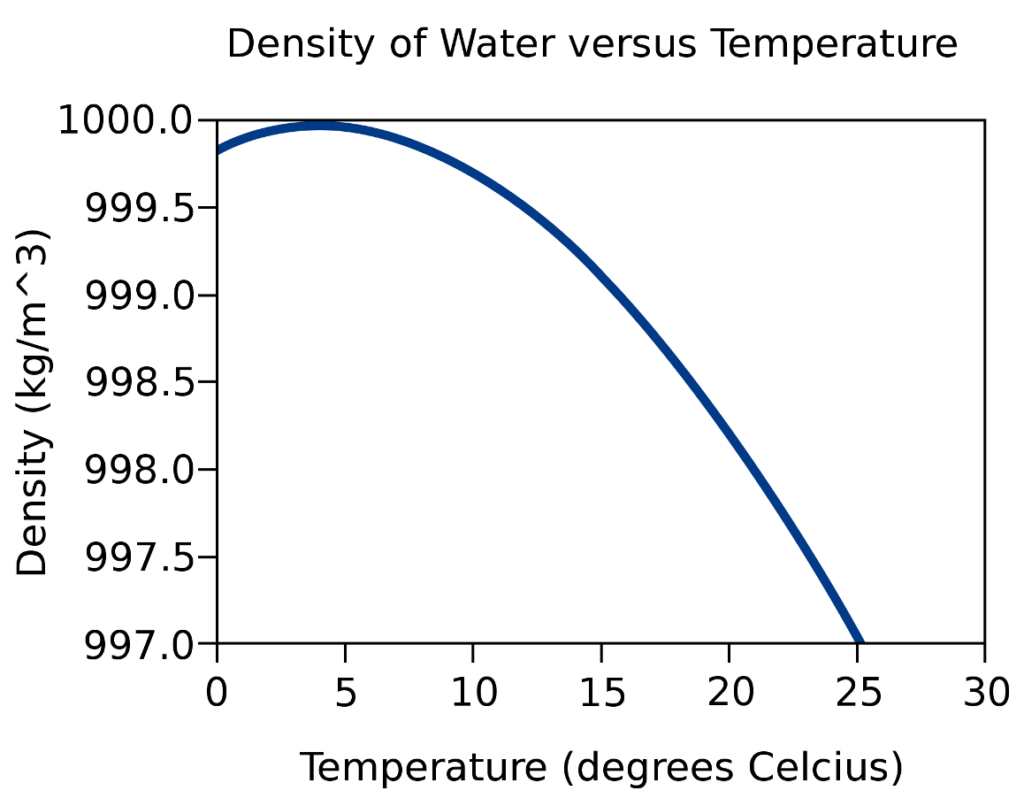
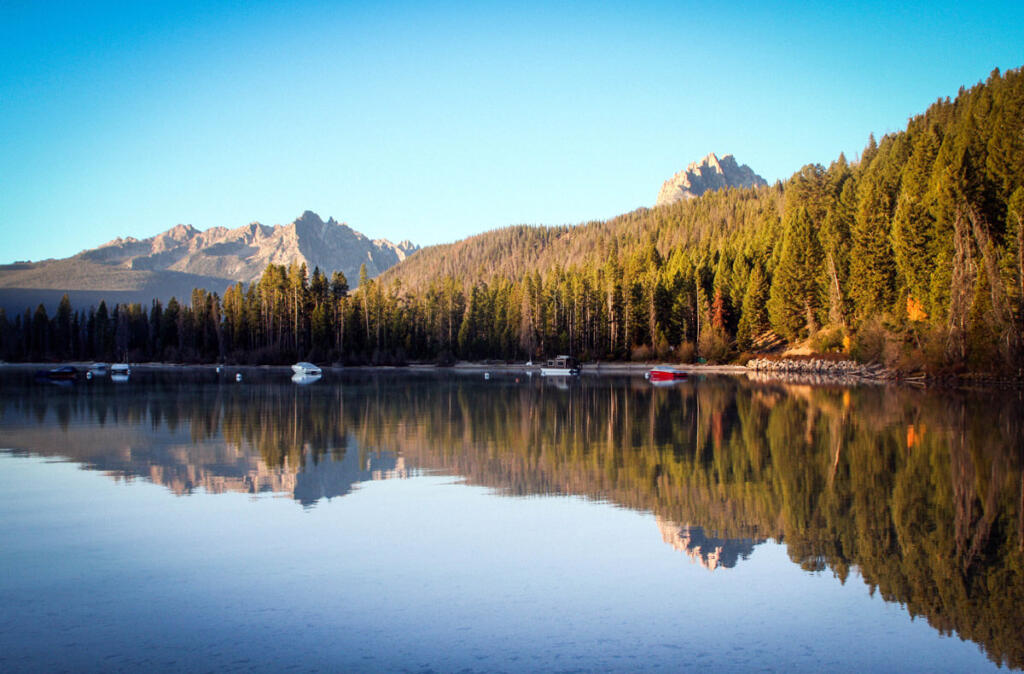
In short, lake stratification occurs when lakes form three distinct thermal layers. These stratified layers each have a different temperature, the top layer being the warmest and the bottom layer being the coldest. This happens because changes in temperature, during warm and cold months, cause changes in the water’s density. When liquid cools, molecules move closer together and become denser. This is why most substances become heavier when frozen. However, the exception to this rule is solid water which paradoxically, is less dense than liquid water due to its unique chemical structure. (This is why ice cubes float in a glass of water). But when it comes to liquids (such as lakes), the colder the water, the denser. As demonstrated by water and oil, most liquids with different densities don’t mix well. The same phenomenon applies to lakes. Because denser materials are heavier, the cooler, denser water sinks to the bottom while the warmer, less dense water remains on top. This results in lake stratification.
What are the Three Layers?
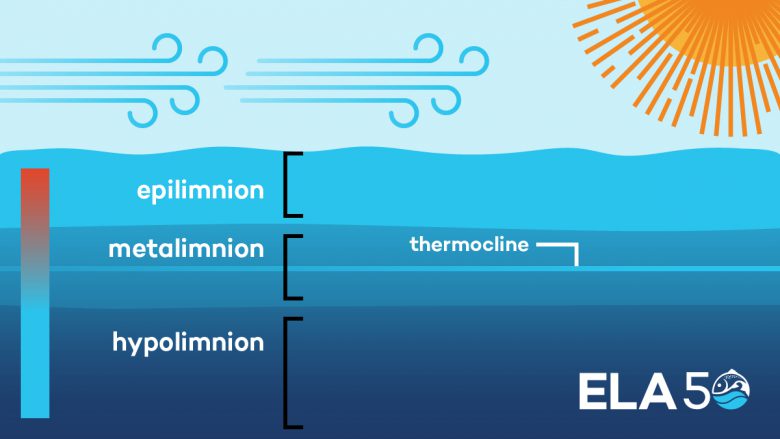
When lake stratification occurs, it creates three layers with distinct temperatures. The epilimnion is the topmost layer. Because it’s exposed to the sun and mixed with wind and waves, it’s the hottest and least dense layer. The thermocline (or metalimnion) is the middle layer which changes depth throughout the day. Its main purpose is to provide a thermal barrier between the first and third layers. Finally, the hypolimnion is the deepest and coldest layer that extends to the lake floor.
Specific temperatures of these three layers depend on the lake’s climate. For example, on Lake Erie, the epilimnion is around 22 degrees Celsius while the thermocline is 10 degrees, and the hypolimnion is 4 degrees. If your lake home is in a warmer climate, these numbers could be higher.
When Does Lake Stratification Occur?
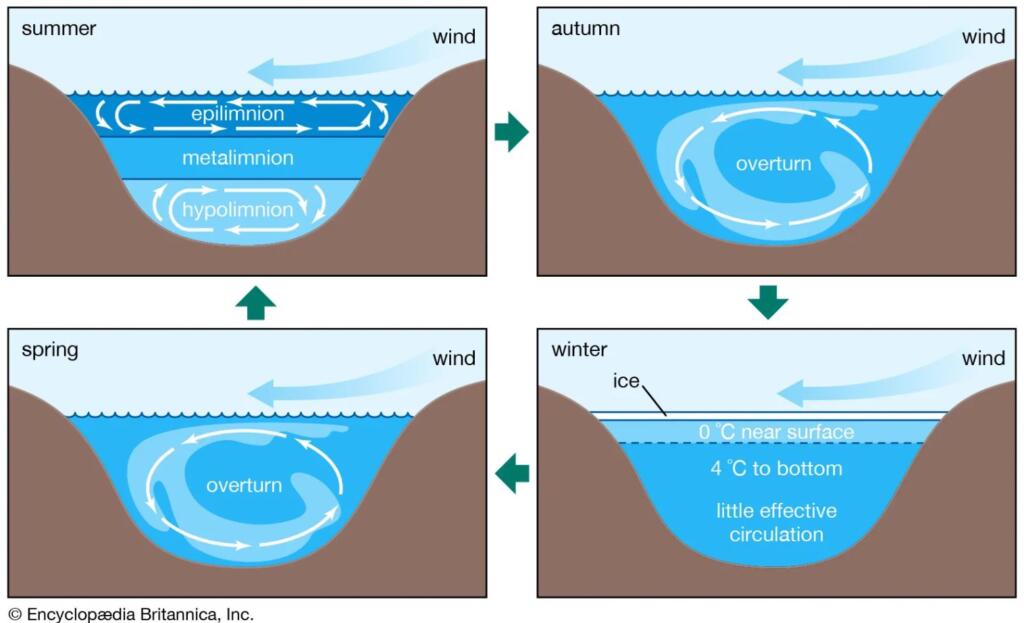
Lake stratification doesn’t occur year-round. In fact, the most intense stratification happens between late spring and early fall. The hot summer heat causes the epilimnion’s temperature to increase and create these three layers.
The extent to which lakes stratify during the summer depends on the size of the lake. Large, deep lakes will certainly stratify each summer, while smaller, shallow lakes may be too windblown to form distinct thermal layers.
During winter, lakes de-stratify and the temperature is uniform. This is called isothermal water and it allows lake turnover to occur in the fall and spring.
Why Does it Matter?

When lake stratification occurs, the hypolimnion is too dark and dense to allow oxygen flow. This is because its low depths are divorced from the wind and sun that the epilimnion layer receives. Since aquatic plants require oxygen, these plants don’t thrive during the summer. They also don’t thrive during the winter when a frozen top layer depletes the water from oxygen as well.
However, in the spring and fall when lake turnover occurs, water and wind mix evenly through the waters. This replenishes oxygen levels throughout the lake, which is vital for aquatic organisms. Every other season, lake turnover is necessary to keep oxygen in the water and maintain balance for lake organisms’ survival.
For more clarity on the concept of lake stratification, check out this demonstration from Dr. Stan Gregory, professor of fisheries and wildlife science at Oregon State University. Soon, you’ll be able to share these fun facts with your lake house guests!

